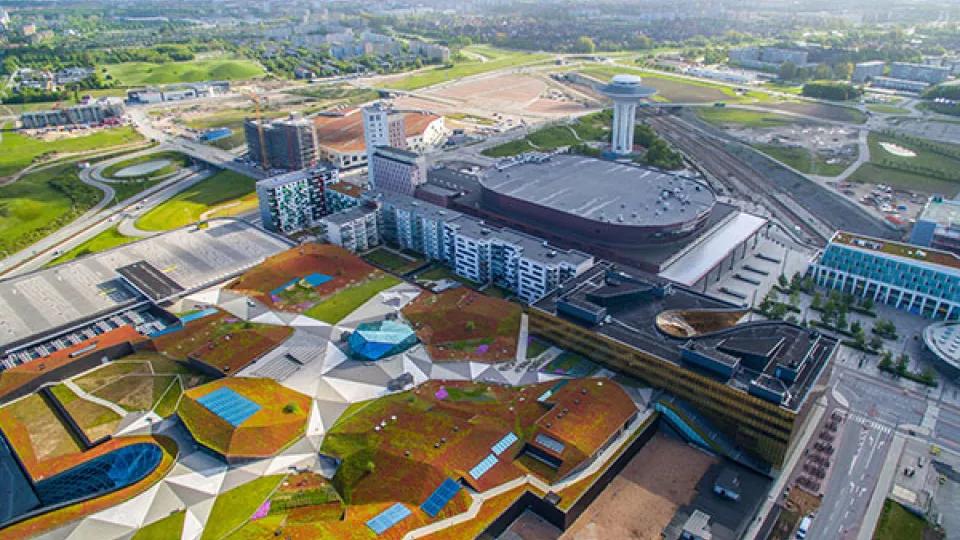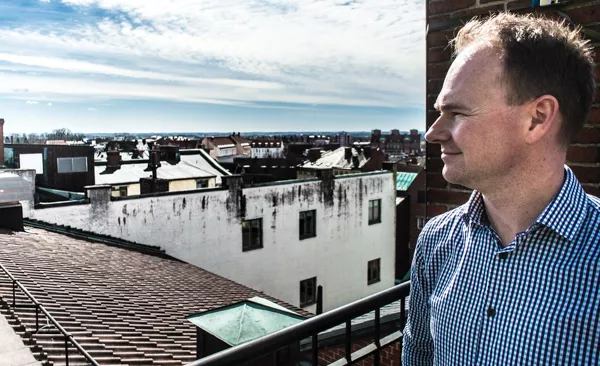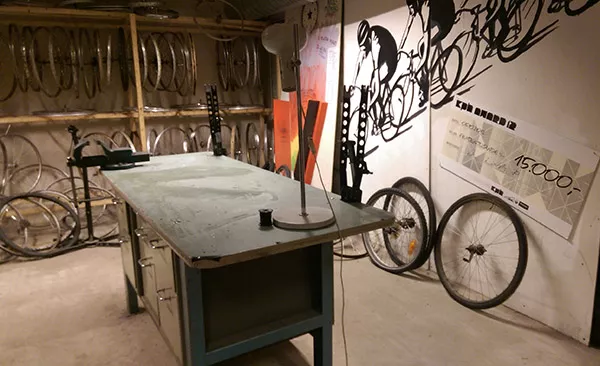The Governance of Urban Sustainability Transitions (GUST) research project is soon coming to an end. It has explored the concept of Urban Living Labs, and has involved four research organisations and cities in Sweden, the UK, Austria and the Netherlands. One outcome from the project will be a handbook full of ideas for the transition to more sustainable cities to be used as an inspiration for urban stakeholders.
‟Urban Living Labs allow cities to go way beyond business as usual”, says Kes McCormick, project coordinator of GUST and a researcher at the International Institute for Industrial Environmental Economics (IIIEE) at Lund University.
There are many cities with visions and goals, but making the transition in reality can be very challenging. The concept of Urban Living Labs is a way to test and improve ideas before scaling them up or spreading them further.
‟The concept builds on the simple idea of seeing is believing. It´s amazing the impact you get from actually going into a smart home or a sustainable district. It can have a great influence on decision makers and people that normally don´t come into contact with this kind of innovations at all. The ability to experience sustainable living is really valuable.”
The GUST project has studied around 50 examples of Urban Living Labs all across Europe, and 16 of these more in depth. The overall aim of the project is to speed up the pressing challenge on how to provide economic prosperity at the same time as achieving social and environmental sustainability.
Urban Living Labs is not a new concept. The Massachusetts Institute of Technology (MIT) in the early 2000s created smart homes to test how people interacted with technical innovations in real time. Since then Urban Living Labs have been used for many different purposes connected to both technical and social innovations in cities.
KES MCCORMIC AT URBAN CITY LABS
A classic example is when a city temporarily closes a road and covers it with grass, trees and seats to show the citizens, decision makers and companies in the city how it would be without cars. People can then experience what it is like and the city can learn what happens, for example, the impacts on traffic and the creation of more public space.
‟Melbourne in Australia, where I grew up, did such an experiment in the 1980s. They closed up a city street and covered it with 11 000 square metres of grass. At that time there was a huge opposition to closing streets to cars in the city, although all the research said the traffic would be better. The businesses thought that no one would come and shop in the city and that they would go bankrupt. Actually the opposite was true and their businesses boomed. This changed the way people thought about cars in the city of Melbourne. Eventually this street was permanently closed for cars and only trams and bikes are allowed on the street today.”
‟I think that Urban Living Labs create a space for people to think freely about new ideas.”
Another goal for the project has been to bridge the learning gap between cities in Europe. Despite the testing of innovations in for example buildings, transport and energy systems, there seems to be a lack of systematic learning across urban and national contexts according to the researchers.
‟We have looked at different examples of Urban Living Labs, from urban gardening, the sharing economy to several smart city projects. The focus has been to study the way these projects were designed and what they do on a practical level. We want to also understand the impact of the projects in a broader sense.”
STAPLN IN MALMÖ IS AN EXAMPLE OF A SOCIAL INNOVATION PROJECT. ONE OF THEIR PROJECTS IS THE BIKE KITCHEN, CYKELKÖKET, AN DO-IT-YOURSELF-SHOP WHERE YOU CAN FIX YOUR BIKE.
PHOTO: KES MCCORMICK
The results so far suggest that the use of Urban Living Labs to make cities more sustainable is spreading. Urban Living Labs also help cities and urban actors to realize that cities are going to change dramatically very quickly. Kes says that local and national governments are playing a different role compared to before:
‟Urban Living Labs are becoming a way to almost govern cities. Today the governments are no longer running everything and there are lots of other organizations and partners involved such as businesses and community groups. When we talk about urban development, what is even more interesting is that there are a lot of new organizations involved that wouldn´t typically be thought of as urban actors. For example Google. They are now an urban actor creating driverless cars, maps and all kinds of things that are actually shaping cities. As an example Google has maps that can tell you where to put solar panels, how much it will cost and how much money you will make.”
Kes points out that many cities are now trying to become more sustainable. Working with Urban Living Labs helps them to learn and develop. A city like Malmö is actually full of experiments, from the Western Harbour to Hyllie. See examples in the pictures below.
‟These kind of projects in cities can be great successes, but they can also be failures. In either case, what´s generally good with Urban Living Labs is that you don´t invest everything in them. So even if it is a failure you learn huge amounts on what not to do next time. If for example the city is going to reorganize its transportation, it´s probably good to fail early than to fail late. That´s also how most companies operate. You don´t want to go a long way developing something and then find out that it doesn´t work.”
When describing his visions for the future, Kes is very enthusiastic and optimistic.
‟Cities are changing very fast with urbanization and innovation. My personal guess is that in five to ten years, we will for example see cities with driverless cars totally changing the way we think of transportation and the design of cities. Another thing is renewable energy. I mean, we are going to have everything on renewable energy later on this century with solar panels everywhere and batteries in cars as storage for the energy. Those kinds of transitions are going to come much faster than many people think.”
Also new ways of looking at consumption could be encouraged by using Urban Living Lab:
‟The idea of us continuing on this consumption based route doesn´t lead anywhere particularly great. Even that could flip around and we could all of a sudden have a dramatic shift to a sharing economy”, says Kes and continues:
‟I think that what Urban Living Labs do is that they create a space for people to think freely about new ideas without someone saying “that´s stupid, we are not going to do that”. Of course, not all of these things are going to come true. And they are certainly not going to turn out the way we think they are. No one can predict these processes, and no one can predict the future. At the same time I don´t believe in just letting the future come to us. We should make it. Right away. Urban Living Labs are a way to create the future we want. Being in some control of the future is much better than just letting it unfold in front of us.”
Text: Nina Nordh
NB! This article was originally published in Lund University Research Magazine




